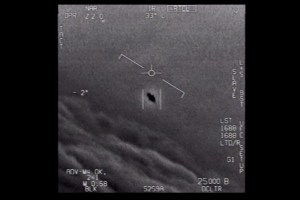
PHOENIX – It takes great care and delicacy to play a vinyl record.
A person first removes the disc from its plastic film, plugging the record player cord into an outlet before placing the vinyl disc onto the turntable platter. As the disc begins to spin, the tonearm comes out and the needle-like stylus is placed along one of the many grooves. The stylus sends the mechanical vibrations picked up from the disc to the component attached to the tonearm, the cartridge, which then converts the mechanical notes into electrical signals, eliciting the audio from each individual groove wall, as the sweet music captured within is amplified by the speakers.
Listening to music on vinyl is almost an art in and of itself – the physicality, a stark contrast to simply pressing play on a streaming service and stepping away from the screen. This “hi-fi” sensation is what some say has fueled the recent uptick in physical album sales.
The 2023 year-end report by entertainment and music data insights company Luminate found that while digital album sales decreased 9.3%, physical album sales, including records, CDs and cassettes, actually grew 8.9% despite the skyrocketing popularity in music streaming. Though vinyl records made up most of the physical direct-to-consumer album sales, with more than 6.8 million units sold in 2023, it still hardly compares to the 1.2 trillion on-demand music streams in the U.S.
“I mean, going online is no fun. You gotta be hands-on,” said Scott Robenalt, the owner of Asylum Records in Chandler. “You got to come in and actually look through the records to get that experience. I’ve been doing it since I was like 7 years old, and I’ll be 60 this year. So it’s a good chunk of years that I’ve been in record stores. … It’s something like nothing else.”
Robenalt, who started Asylum Records during the initial COVID-19 lockdown in 2020, is a self-proclaimed music enthusiast with a large collection of physical music available throughout his vast record store. He also has a personal collection of about 8,000 to 10,000 records in his home. Admittedly though, Robenalt said he has never given streaming a shot and doesn’t plan to either, not while records remain relevant.
“It’s not going to go away. It’s just going to keep getting bigger and bigger and bigger,” Robenalt said. “I wouldn’t open a store if I thought it was going to go away, so I think it’s going to stick around. … Everything old is new again.”
Trends come and go with the changing tides of culture and advancing technology, yet the resurgence of the records represents an enigma people can’t help but keep in style.
“I think one thing is a real sense of ownership over your taste and over the music that you love,” said Dario Miranda, who works at Stinkweeds Records in Phoenix. “I grew up at a time where everybody had CDs, vinyl, and so much of that was part of your identity. … That’s something where I think about somebody getting older, having kids and handing their kid an external hard drive and being like, ‘Here’s what I was into when I was your age.’ So there’s not as much of a sense of ownership over that music.”

Records had their heyday in the late 1970s when bands like Led Zeppelin, Pink Floyd and Fleetwood Mac would send their chart-topping classics to any number of pressing plants across the U.S. Currently, if an artist or band wants their album pressed onto vinyl, their record company has to shell out a pretty penny to send an order to one of the few pressing plants remaining in the U.S., or to pressing plants overseas, which drives up the cost, Robenalt said.
Phoenix band Dreamboat cited expenses as one of the reasons independent artists, like their band, might not be able to produce physical music. Dreamboat has put out several digital releases but also wants to put out physical copies of their music on vinyl, CDs or cassettes.
“This is a physical copy of music and it’s the way it used to be done. I think it’s really cool that people are bringing that back,” Dreamboat member Logan McDade said about vinyl records. “It’s unfortunate that it is a little expensive now … but as it becomes even bigger than it already is, I think it’ll be more affordable as time goes on.”
The cost of buying records fluctuates with rising costs of imported pressings and affordable sales events such as local music markets, vinyl swaps and the celebration of Record Store Day. And yet, despite pricing, the cultural resurgence of vinyl persists as generations rediscover the thrill of collecting physical copies of their favorite music.
Part of what has sparked the interest of this newer generation of vinyl collectors could be attributed to the Taylor Swift phenomenon. The week Swift released “1989 (Taylor’s Version)” on vinyl, Luminate recorded a spike in sales for physical music, most notably vinyl records. Of the top 10 vinyl record albums sold in the U.S. in 2023, five of them are from Swift’s discography.
“The younger generation, they’re becoming minimalists,” Robenalt said. “The only thing that they’re not becoming minimalists at are collecting records. And records are the biggest, bulkiest things there is, but they’re the coolest things to collect.”
Part of what draws lulls music listeners back to records is the experience that comes with every pressed record.
“You take that record out, you take it out the sleeve. If you’re like me, you’re cleaning it before you listen to it. You’re putting that on, you’re going through the care of moving that needle onto that record. And at that point, you’ve gone through these motions to prepare you to listen to music,” Miranda said. “Music is one of those things where people will often want it to be convenient. They’ll want to be able to just have it on whenever. It makes us forget that you can actually get a really great experience if you’re doing nothing but listening to music.”
For more stories from Cronkite News, visit cronkitenews.azpbs.org.



























